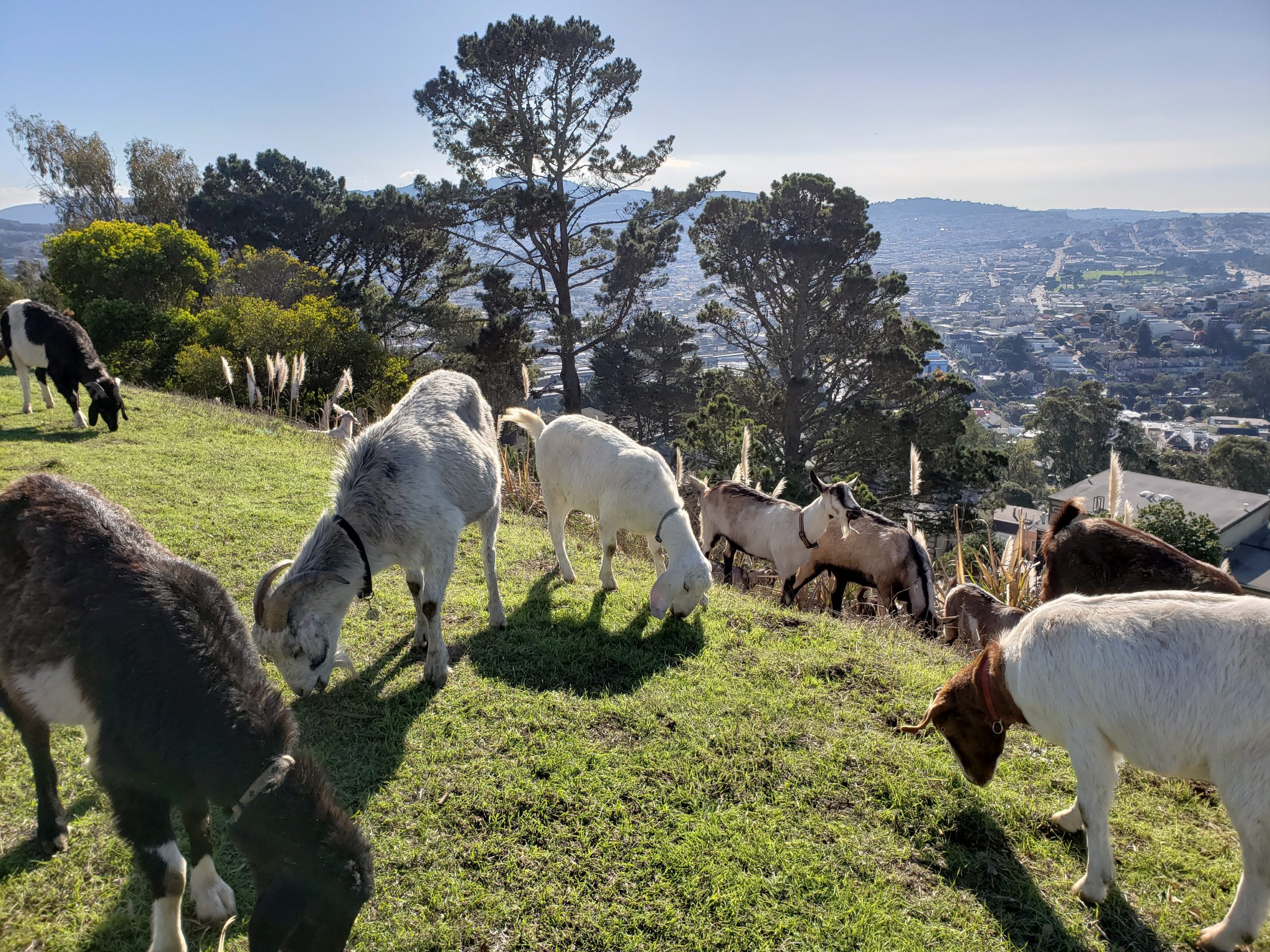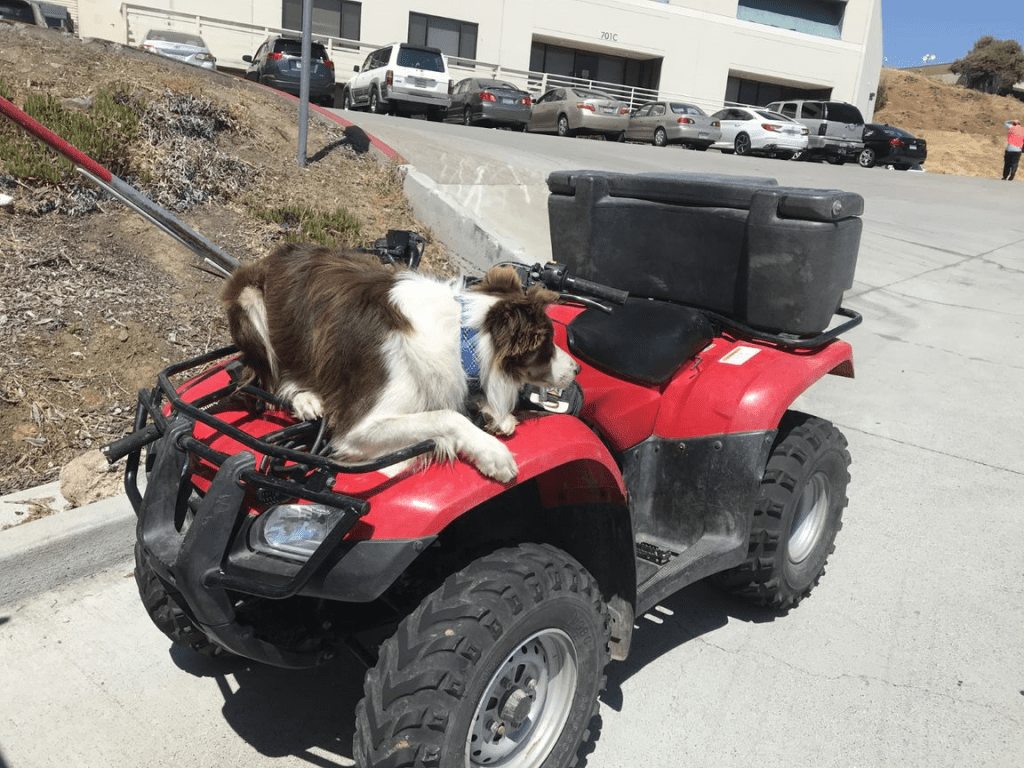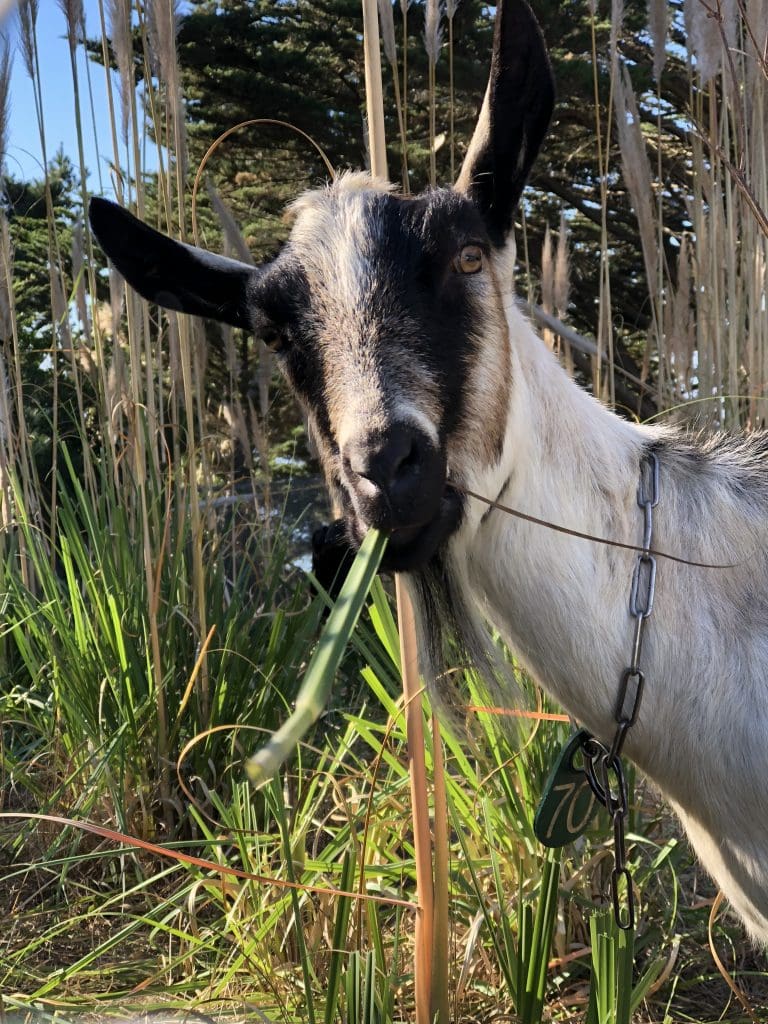
Since Gachina Landscape Management implemented goat grazing as part of its sustainable landscape practices four years ago, interest has grown every year.

Photo: Gachina Landscape Management
Customers vary from corporate campuses and HOAs to cities and estates. The size of the job can be from less than half an acre to 200 acres or more. Herds of goats can be as small as 10 or over 600, which calls for skilled herding dogs to be involved.
While it took a year for Gachina to earn their first customer approval, the rewards were notable.
Lauren Galanes, the San Francisco branch manager, spearheaded this initiative. She says they saved their first large client over $100,000 the first year and reduced their field crews’ exposure to hazardous conditions having to work on slopes with equipment. They also cut down their debris from 416.5 cy of green waste in 2017 to 15-30 cy in 2020.
“Sometimes, it may take time for the public to warm up to the idea of a practice that is uncommon,” says Cristina Prevarin, sustainable landscape & PHC manager for Gachina. “Goat grazing is certainly not a novelty, but in a high tech environment such as the Silicon Valley, it is not the first option our clients may think of when they want some land cleared from weeds.”
Check out the video below to see a herd on the move.
The company added goat grazing because the benefits are in line with Gachina’s commitment to sustainable land management. Goats help with fire hazard reduction, less green waste disposal, invasive species reduction, and increased worker safety. The goats are particularly effective on steep hills and can control and eventually eliminate certain invasive plants in areas.

Photo: Gachina Landscape Management
The goat grazing has created a recurring revenue stream as current customers request the service year after year.
“New customers come on board every year because they see the herds more frequently and the social media posts on goats/sheep are receiving many hits,” Prevarin says. “Additionally, I believe that more and more people are becoming aware of the importance of using more sustainable strategies, regardless of the field they are in.”
Gachina charges an average of $1,200 per acre, depending on how the area to be grazed is laid out, such as if there is an exiting fence and water source. The company partners with multiple subcontractors in order to tailor the operation to the specific site and condition.
Prevarin says they select their subcontractors based on their response time and follow-up and how many goats escape per service. She says they’ve never had any escapes happen on their projects.
She says their employees love and support this service and many want to be present when the herd is released.

Photo: Gachina Landscape Management
“Goats are extremely curious and they like taking pictures,” she says. “We noticed the public (residents, employees, passersby) stops to observe them, take pictures and just enjoy the dynamic within the herd. The employees of one of our corporate campuses stated that it was stress relief therapy observing the goats and listening to their calls.”
Aside from the herds being seen in public, Gachina promotes this service by sharing pictures and videos of the grazing as well as advertising in local publications. Before the pandemic, they brought their goat replica, Billy, to trade shows and played a video of one of their goat releases.
The company can use the goats as early as April and continue until the rainy season.


Comments are closed.